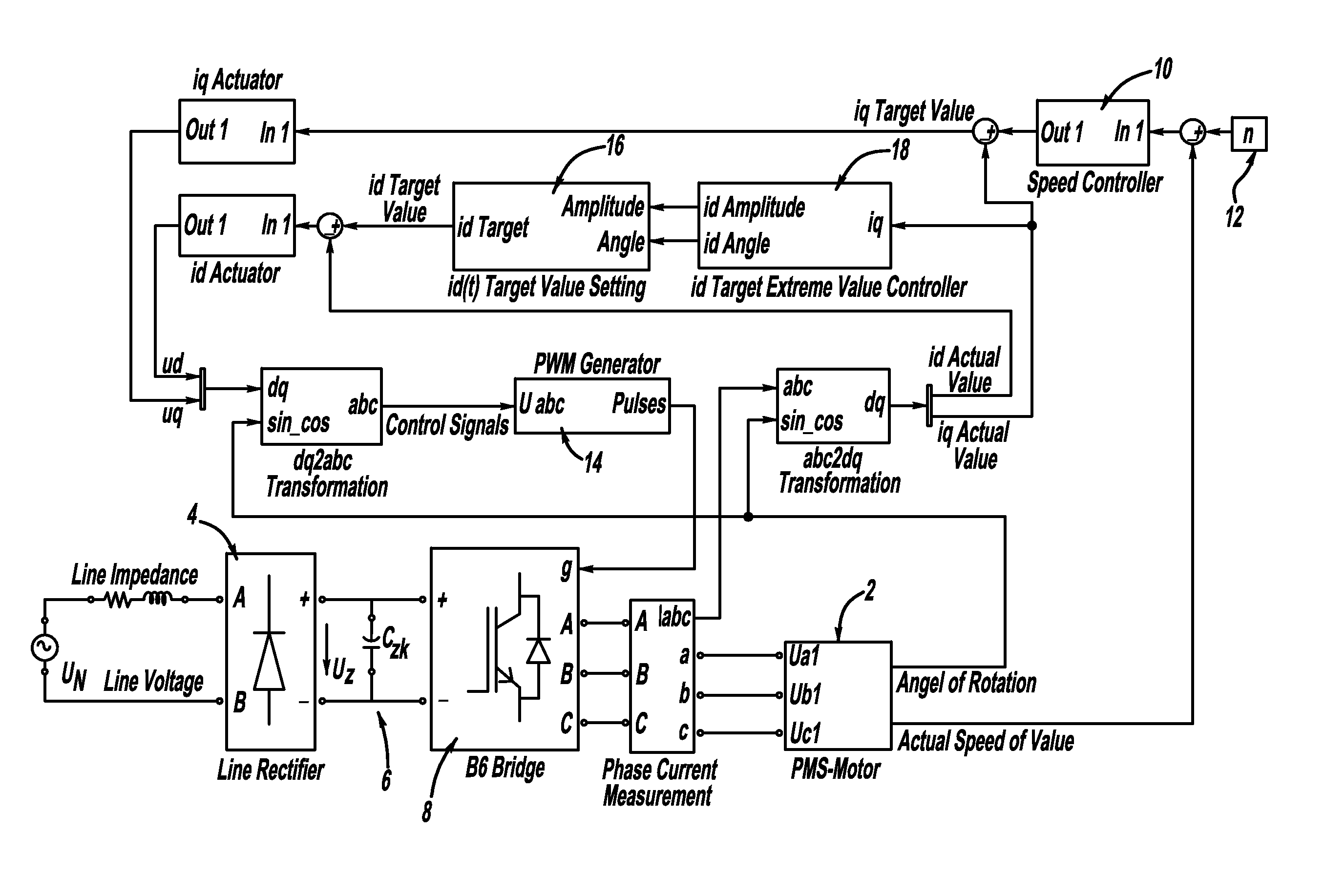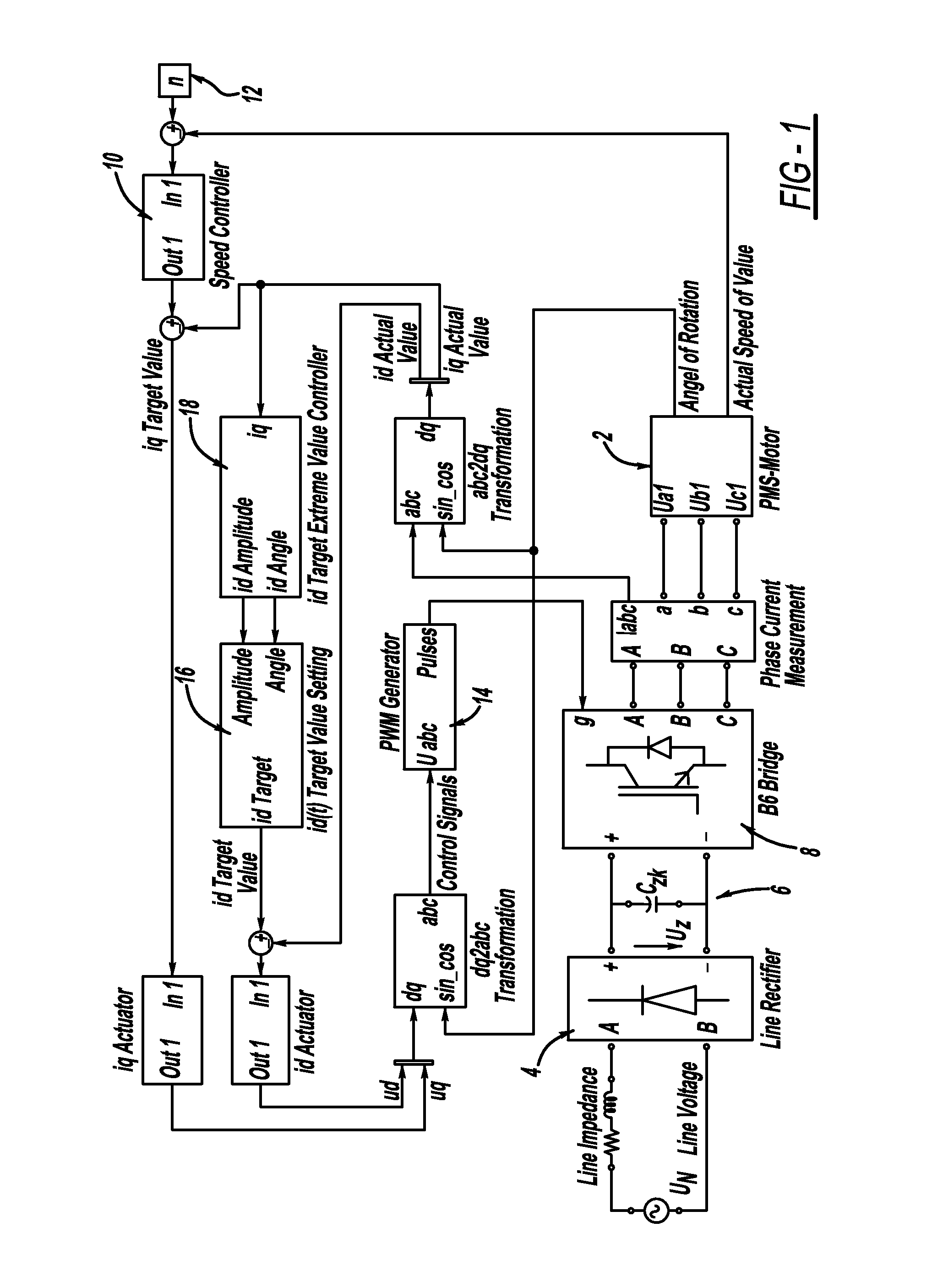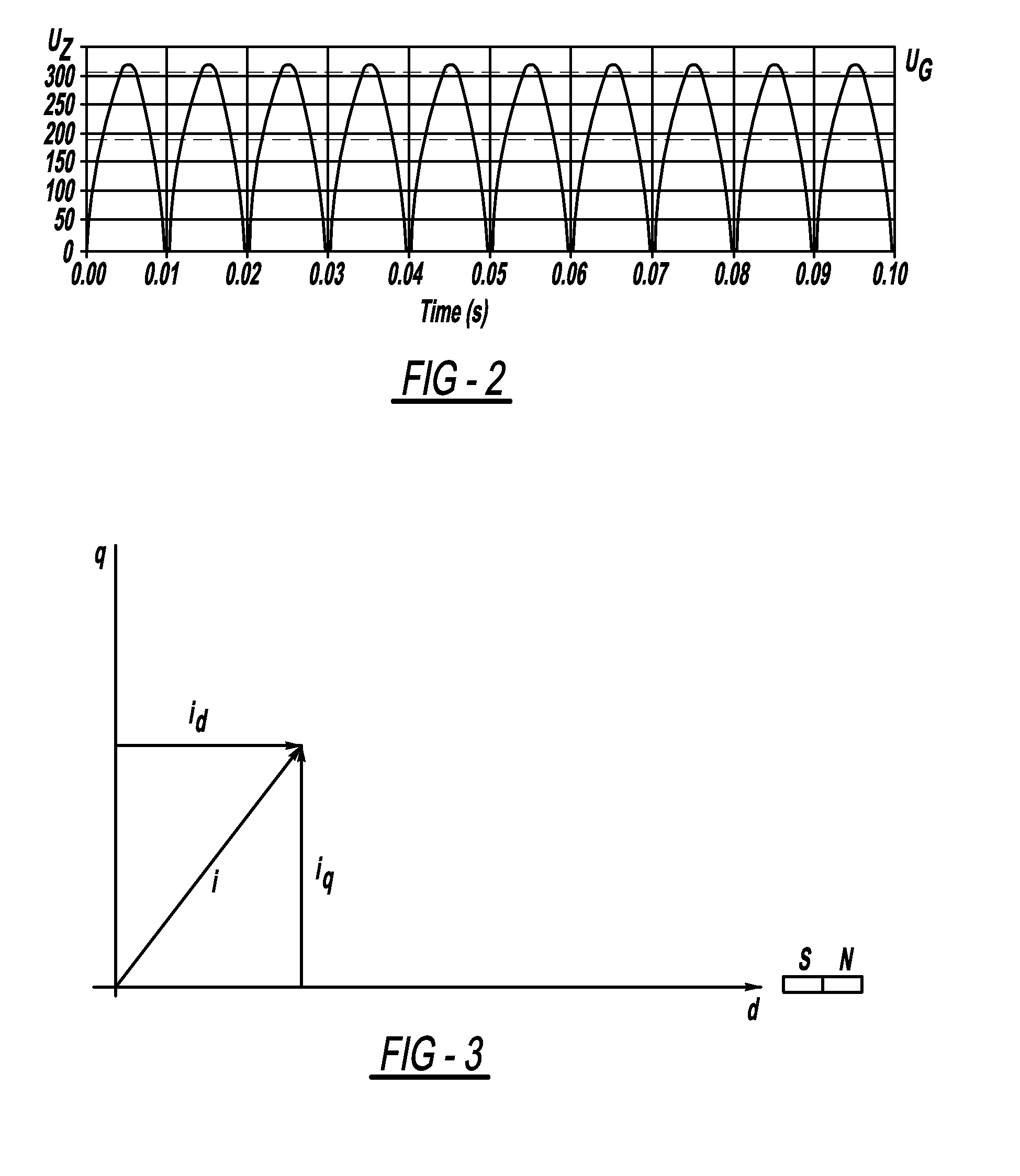Method and Control System for Controlling a Brushless Electric Motor
- Summary
- Abstract
- Description
- Claims
- Application Information
AI Technical Summary
Benefits of technology
Problems solved by technology
Method used
Image
Examples
Embodiment Construction
[0021]As is apparent from FIG. 1, a control system according to the present invention for controlling a collector-less, permanent magnet electronically commutated (EC) synchronous electric motor 2 consists of a supply or main rectifier 4, an downstream slender intermediate circuit 6 which contains no or only a minimum intermediate circuit reactance as well as an inverter 8 which is powered via the intermediate circuit 6 and can be applied for commutating the electric motor 2. By means of the main rectifier 4, which is illustrated in a simplified manner but designed as a full bridge, a single-phase mains AC voltage UN at a supply or main frequency fN is rectified into a strongly pulsating intermediate circuit voltage U. This intermediate circuit voltage Uz is illustrated in FIG. 2; it pulsates at twice the main frequency 2fN between zero and a peak value. The voltage profile corresponds to the value of the sinusoidal main AC voltage UN.
[0022]According to FIG. 1, the intermediate circ...
PUM
 Login to View More
Login to View More Abstract
Description
Claims
Application Information
 Login to View More
Login to View More - R&D
- Intellectual Property
- Life Sciences
- Materials
- Tech Scout
- Unparalleled Data Quality
- Higher Quality Content
- 60% Fewer Hallucinations
Browse by: Latest US Patents, China's latest patents, Technical Efficacy Thesaurus, Application Domain, Technology Topic, Popular Technical Reports.
© 2025 PatSnap. All rights reserved.Legal|Privacy policy|Modern Slavery Act Transparency Statement|Sitemap|About US| Contact US: help@patsnap.com



